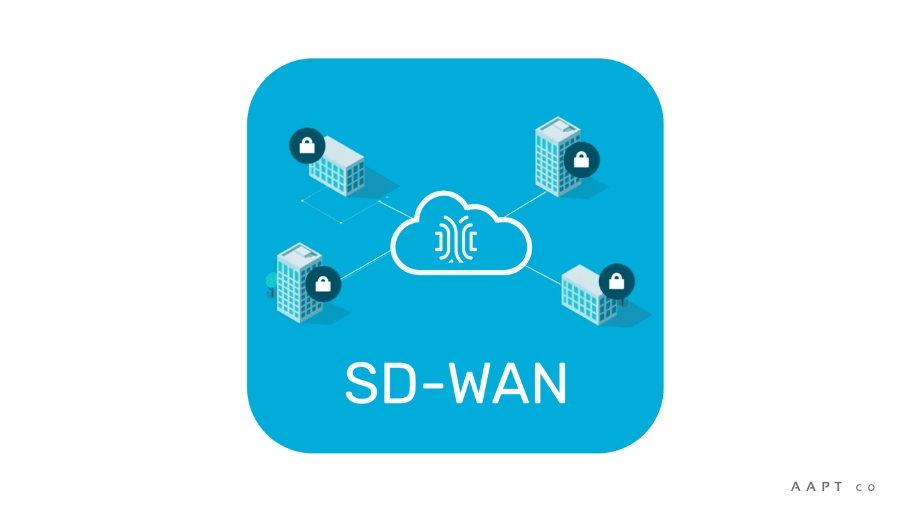What Does SD-WAN Mean for Security Networking and Cloud Security?
This post was last updated on December 10th, 2023

The technology enables organizations to deploy network security technologies like a firewall as a service, secure web gateways, and zero-trust networking easily at multiple sites. It also offers centralized management and orchestration for these technologies. It also allows enterprises to backhaul traffic over lower-cost internet connections instead of expensive MPLS circuits. This reduces costs while improving performance.
Enhanced Security
With the rise of cloud adoption and remote work, many enterprises rely more on WAN connections than ever. This has prompted heightened bandwidth and security requirements that outdate traditional networking strategies. SD-WAN improves WAN performance by using multiple low-cost network connections, such as broadband internet, to offload traffic from MPLS circuits and provide business continuity in an outage. It enables business-critical applications to be prioritized over other traffic, which minimizes latency and packet loss. Combined with application optimization, employees can continue to access critical apps and work efficiently from anywhere. Enhanced security is also a key benefit of SD-WAN. By encrypting data in-flight and at rest, SD-WAN enables secure business communications and prevents sensitive information from being accessed by unauthorized parties. This protects business-critical applications and allows IT to focus on other strategic priorities.
With centralized management, SD-WAN reduces the need for on-premises equipment and simplifies deployment and configuration. With Versa Networks, IT teams can remotely change network policies, QoS, and threads from a single interface, including advanced third-party and CASB security services. This unified framework enables businesses to deploy new sites and applications in minutes, not weeks. It also gives IT a clear picture of performance across all locations, providing actionable insights to identify and resolve issues. In addition, dual active uplinks eliminate downtime and ensure a seamless transition to backup links during an outage.
Improved Performance
The traditional hub-and-spoke model of WAN architectures backhauls traffic from branches to a central network hub, which causes latency and impairs application performance. SD-WAN provides more efficient, agile WAN connectivity by allowing data to travel across multiple channels while prioritizing critical applications using dynamic bandwidth allocation and providing IT with a single interface for network insights and provisioning. SD-WAN provides security networking benefits by enabling more secure connections to cloud environments or data centers. SD-WAN utilizes enterprise-level encryption to protect the overlay tunnels that connect each branch and the centralized network, which makes it more difficult for hackers to intercept or modify data as it’s transmitted between locations. Unlike VPN, which has to rekey encrypted data packets constantly, SD-WAN automatically refreshes encryption keys for every incoming or outgoing data packet, further protecting the network from breaches.
Finally, SD-WAN makes it easier for IT teams to deploy and maintain security technologies like firewall as a service (FWaaS), secure web gateways, zero-trust network access, and CASB on remote devices. The software intelligence of SD-WAN enables consistent, centralized management of all security policies at the network edge, even with multi-cloud and hybrid device deployments. IT teams can deliver unified communications, collaboration, and other business applications over the network more easily – without bringing an IT specialist to each new location.
Greater Flexibility
As the amount of data transferred across networks grows, security and performance must also improve. SD-WANs simplify network infrastructure and optimize application performance by decoupling WAN connectivity from hardware to software. They’re also more flexible and cost-effective than traditional WANs. For example, deploying an SD-WAN in a branch office requires no complex hardware or appliances. It can be done through a zero-touch provisioning process. It takes less time, resources, and money than laying optical fiber or using LTE modems to connect offices in remote locations. Unlike legacy WAN architectures that rely on private Multiprotocol Label Switching (MPLS) connections to the cloud, SD-WAN allows businesses to prioritize business-critical applications and use more affordable public internet or broadband links like Ethernet. This will enable companies to scale without the high upfront costs of an MPLS deployment.
Additionally, an SD-WAN can deliver a more consistent application performance by optimizing data transmission and reducing latency between branches and the cloud. It also protects information from cyber-attacks by encrypting the overlay network and ensuring data is sent over secure channels. This means that even if an employee uses a free Wi-Fi hotspot at a hotel or a coffee shop to access the internet, no one can intercept data and steal sensitive information.
Lower Costs
When enterprises deploy an SD-WAN, they can save money on infrastructure and transport costs by using broadband internet services to connect branch offices to data centers and cloud applications. Moreover, they can reduce operating expenses by delivering higher application performance and secure access without expensive MPLS or leased lines.
SD-WAN technology uses a secure overlay network that encrypts traffic over all endpoints and connections so cyber threats can’t compromise data. It also monitors real-time data statistics to detect any problems. Hence, it can detect and respond to issues before they lead to performance degradation or outage. Furthermore, it can optimize bandwidth usage through load balancing and specialized protocols to fight losses on low-quality channels. A business-driven SD-WAN prioritizes traffic on an application basis and automatically routes it over the most efficient path. This helps to deliver consistent QoE and eliminates network outages caused by link degradation.
Most Inside
Most Inside offers high-quality recommendations and valuable updates to enhance all aspects of your life, providing premium guidance and enriching experiences.



